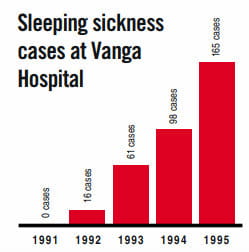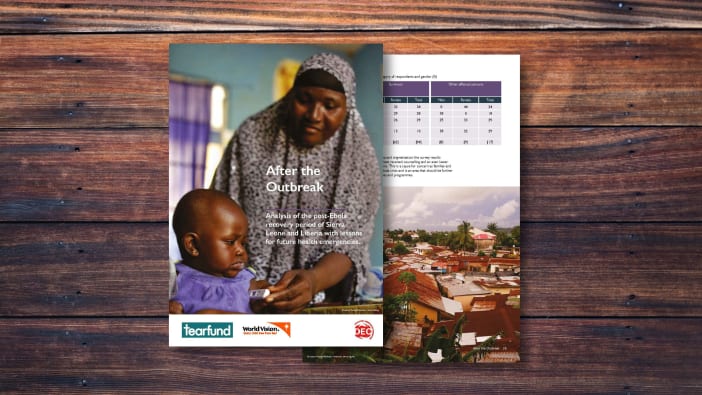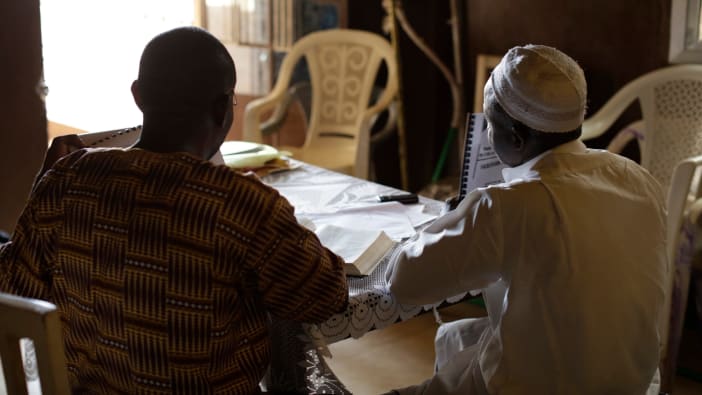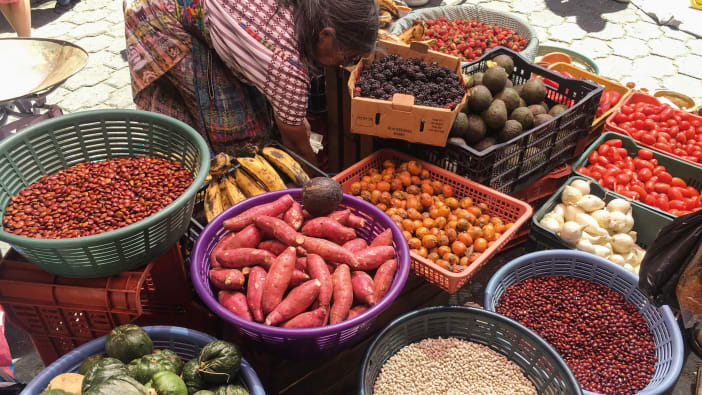Sleeping sickness (trypanosomiasis) is a disease carried by tsetse flies which affects an estimated 55 million people in 36 African countries. It causes severe pain, suffering and death in mainly rural communities. A WHO specialist has described the situation in many parts of Africa as a ‘time bomb’ under constant threat of exploding. Here is recent information from a Footsteps reader, Dr Paul Fountain…
In Zaire the 1995 Ebola epidemic is over. But the sad reality is that this is becoming a land of epidemics. The current one is sleeping sickness. Back in the 1940s and 50s, when Zaire was a Belgian colony, there was a massive campaign against the tsetse fly which carries sleeping sickness. It was almost entirely wiped out. During the 60s, 70s and 80s there were no cases at our hospital – Vanga.
In the last few years, however, the disease has returned. The chart below shows a tenfold increase in just four years.
A major epidemic
Since most cases came from two specific groups of villages, a team was sent out to investigate. They were able to check about half of the population. Of 2,092 people examined, they found 82 positive cases. This represents an infection rate of 4% in our area.
The official figures for 1994 report 19,000 cases of sleeping sickness in Zaire. This was twice the number from the previous year. However, comparing this figure with the rate of infection we have found here, it is likely the real figure must be much, much higher. We are in the middle of a major epidemic – far more serious than ebola fever. But there is no public interest in this epidemic – and few medical resources and drugs to help fight it.
The treatment for sleeping sickness is expensive: about $50 per person. Most people can’t afford that. Yet if they aren’t treated they will spread the disease to others. With treatment there is a very good recovery rate; without treatment there is certain death.
Free treatment for all?
Our health programme has decided we must give free treatment to all sleeping sickness patients. In the last week they have been descending on Vanga Hospital. A whole village has grown up here of patients and their families – and as word spreads, more are expected to arrive. A more difficult question is how to take treatment to those who can’t come in.
It affects us who live at Vanga. Already Vanga has tsetse flies. They aren’t yet infected with sleeping sickness. But with all these patients, there is a high risk that one of the local tsetse flies will bite an infected patient and then bite a local animal. The risk to those of us living and working at Vanga is increased. As many practical measures as possible are being taken to protect people here…
- All animals capable of being a reservoir for sleeping sickness have been moved away from Vanga.
- Tsetse fly traps have been put up.
- Mosquito nets are being used – especially for children.
Outside support
The treatment programme being used here is based entirely on the drug Melmerarsoprol. We have been told by the Trypanosomiasis Office in Kinshasa that production of this drug will stop in two years because its manufacture causes environmental damage to the Rhine River in Germany. Alternative drugs – Eflornithine ($200 a treatment) and Nifurtimox – are even more expensive. How will we cope? Will the rest of the world stand by and let this frightening epidemic continue to grow?
For up-to-date information on sleeping sickness, contact… Dr Cattand, Division of Control of Tropical Diseases, WHO, CH-1211 Geneva 27, Switzerland.










